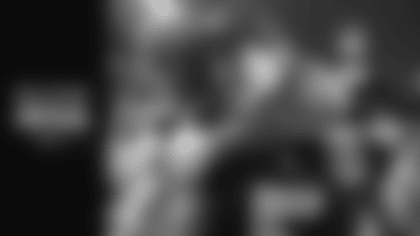Down in Pioneer Square, there is no telling when Bertha will resume moving the earth. But scientists are positioning their instruments in anticipation of the 12s and Seahawks doing some earthshaking on Saturday.
For the second year in a row seismologists from the University of Washington will deploy three sensors at CenturyLink Field for the divisional playoff between Seattle and Carolina.
For fans, the fun comes from seeing real-time readings of the next Beast Quake. A new QuickShake tool will send data from the stadium sensors to the Pacific Northwest Seismic Network **website** in three seconds. There's a 10-second delay on the TV broadcast.
In other words, says PNSN's Bill Steele: "You would see the graph spike at about the time the team lines up for the play on TV."
That's similar to listening to radio voice Steve Raible cry "Holy Catfish!" a moment before your TV picture shows The Big Play.
Fans can also follow along Facebook and on Twitter **@PNSN1**.
Using monitors and metrics to measure 12s fanaticism is fun. But the big news is that this seismic trial takes us all one step closer to realization of an earthquake early warning system.
University of Washington seismologists place monitors in CenturyLink Field to measure the seismic impact of the playoff game.


























The PSSN monitors earthquake and volcano activity from the California border north to British Columbia. Together with the U.S. Geological Survey it will begin the rollout of a system that provides notice of an incoming strong shaking. Large businesses and public agencies get a test drive next month.
"Right now we are able to rapidly assess an earthquake from the first P-wave arrivals, estimate its magnitude and then project what the ground shaking is going to be like where you live," says Steele.
Just as it's possible to provide coastal communities warnings of impending tsunamis or instantly broadcast Amber Alerts across a spectrum of media, including mobile phones, the public will someday soon get advance earthquake warnings.
For instance, a crustal temblor warning might be several valuable seconds, up to as much as 30. That would allow students time to move away from school windows to duck and cover under desks. It could cut speed to trains or stop elevators and open doors at the next floor.
A less likely yet more destructive Cascadia Subduction Zone earthquake along the coast, which last occurred in 1700, could trigger a five-minute warning to Puget Sound area residents.
Seismology and the Seahawks first crossed paths four years ago, when a Pioneer Square monitor detected an earth-moving event. As Marshawn Lynch ran over and around countless New Orleans defenders during his iconic, game-clinching 67-yard TD, the celebratory 12s were bouncing up and down, moving the needle.
"The end of a close game is when people explode," says PNSN director John Vidale. "When people start jumping and the stands begin swaying back and forth, people get even more excited. So during Marshawn's run, more energy builds and we see the frequencies that push into the ground and that we can see on our instruments."
With a bigger team, better technology and promising a faster response time, now Vidale must simply watch and wait.
No one, not Vidale nor the Panthers or the 12s can predict when the next Beast Quake will hit. However, on Saturday all the elements will be in place to see and feel the earth move, and to start spreading the news.






